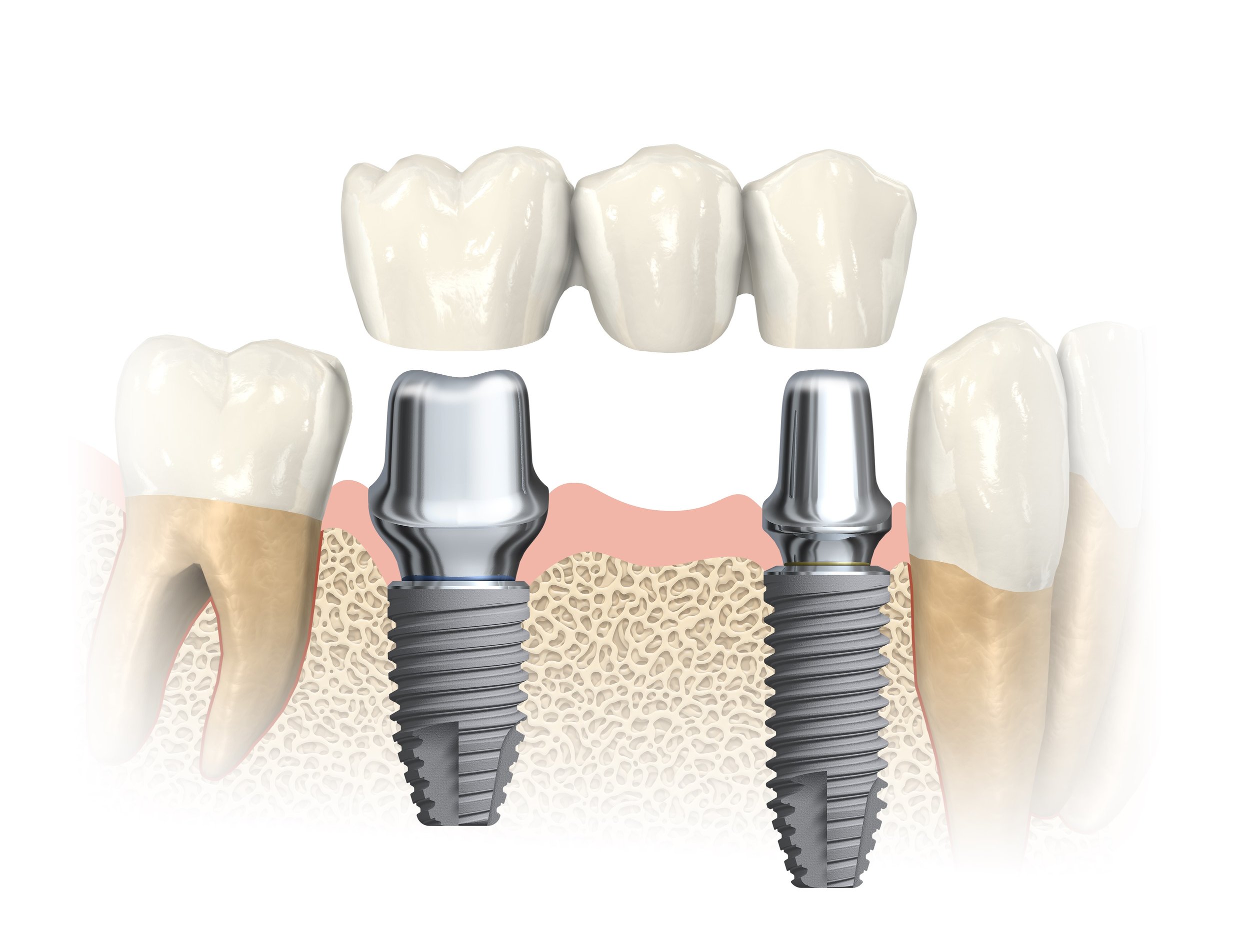Bridges
What’s a dentist’s favorite type of bridge? 🌉
A dental bridge, it fills the gap! 🦷
What are bridges?
It’s fixed dental restoration that involves connecting an artificial tooth to two natural teeth or implants, like the Sydney Harbour Bridge (pictured) and usually made up of three main parts:
Two pylons (we call that abutment)
The arch/”Coat hanger” (we refer that as a pontic)
Why would I need one?
It’s the best alternative to dental implants in order to be fixed in your mouth and to fill in the gaps. It works especially well if you have large fillings on each side of your tooth and you need a crown anyway (best of both worlds).
How do you prepare a bridge?
Here’s a summary flow chart of generally how a bridge is made:
For those who prefer reading:
We check and look at your teeth to make sure that they are suitable to make a bridge (similar to knowing that the foundation of your house is stable to rebuild/renovate)
First appointment
We numb your tooth up with local anesthetics.
Tooth will be reshaped to allow the future bridge to sit properly (can take between 1-3 hours).
A scan (or impression) will be taken so that we can send it to a dental lab to manufacture your bridge.
A temporary bridge is placed to protect the teeth while custom prosthesis is being made in an Australian based dental laboratory.
Typical turnaround time is around 2-3 weeks
Next appointment:
We numb your tooth up again with local anesthetics.
We check that your prosthesis is made up to standard.
If it is, installation will be done on the same appointment.
If not, we will redo the prosthesis.
How many appointments does it take to make a bridge?
For the bridges which caps your tooth: at least two to three appointments.
For implant bridges: at least two appointments - this is for implant stage 2 treatment. Stage 1 implant treatment is a separate treatment placing an implant in the bone.
Where do you have your bridges made?
We outsource our bridges to local Australian labs and work closely with them. I usually pick labs which are located in either locally in Sydney or all the way to Melbourne depending on the type of job required. We try to support our local technicians.
What materials are bridges made out of?
Gold alloy
Ceramic
A combination of ceramic plus palladium/nickel alloy
Zirconium/Zirconia
Ceramic/Zirconium combination
We will inform you about the recommended material for your crown based on your situation as different materials have their pros and cons.
What are the different types of bridges?
There are three main types:
Conventional bridges
Implant bridges
Maryland/resin bridges
Conventional bridge
Traditional bridges usually require at least 2 healthy teeth next to a gap to attach a custom-made replacement. This method was common before dental implants became popular. It’s still a great alternative to dental implants and especially if your teeth are heavily filled with fillings requiring additional strengthening.
Implant bridge
Implant bridges function like traditional bridges but use dental implants instead of natural teeth:
Maryland/Resin bridges
A resin-retained bridge is a type of bridge held in place by special dental cement. It uses metal wings on abutment teeth that stick to the inside of a tooth. Minimal tooth preparation (0.5mm compared to 1.0-1.5mm for a regular bridge) is necessary. This method is best for upper front teeth but may have limitations.
What are my other options?
Here is more details of the pros and cons of each treatment:
-
+ Fixed to your existing bone.
+ The closest thing to +having your original tooth.
+ Long term lifespan
+ High success rate
+ Prevents and/or reduces bone resorption.
- Cost
- Involvement of multiple dentists and dental specialists
- Time: takes weeks and months to plan and execute - like building a house from scratch!
-
+ Fixed to the adjacent teeth.
+ A very good alternative to dental implants
- The need to prepare and drill the adjacent teeth (big disadvantage if the tooth had never had a filling)
- Not suitable if you have multiple large gaps to fill
- Will not prevent bone resorption (can result from the tooth being replaced under the bridge to have large gaps and food trap).
-
Note: Option limited to upper arch only!
+ Relative lower cost compared to dental implants.
+ Medium term solution
+ Fixed to the adjacent tooth after conservative preparation.
- Limited to the upper front tooth only - Will not prevent bone resorption - There will be a chance of debonding over time (i.e. the bridge unit comes off) but on the plus side it can be rebonded easily
-
+ Relatively quick to make.
+ Conservative preparation of the existing tooth in order to make the denture stay in.
+ Good, economical option to fill in multiple gaps in your teeth.
+ Very adaptable to future changes (i.e. if you're upgrading to an implant)
- Will not prevent bone resorption
- Because of this, the denture will need to be serviced at least once every 6 months in order to allow the base of the denture to match the change in the bone height.
- Not fixed in the mouth
- Needs to be removed every night
- Good oral hygiene is a must, otherwise the denture can cause the other tooth that is holding it to loosen and exacerbate gum diseases.
- Potential poor tolerance due to people who have oversensitive gag-reflexes
- May reduce your taste sensations - May reduce your ability to bite on foods compared to having natural teeth.
-
+ Viable choice due to the costs of dental treatment
- The alveolar bone where the tooth has been taken will slowly resorb over time once the tooth is lost.
- Because of the above problem, it can make future replacement of your tooth more complex (adding to the cost of treatment)
- Potential aesthetic concern.
- Potential for drifting, rotation and over-eruption of adjacent teeth into the gap over time
- Possible gum problems in the future due to the above scenario
So what’s the best for me?
Each person has their own unique needs, so it is difficult to tell. The best way to know what you need is to contact us and I'll sit down with you to go through the best options.











